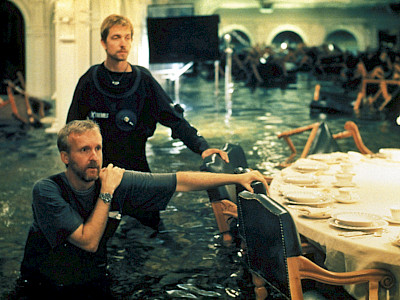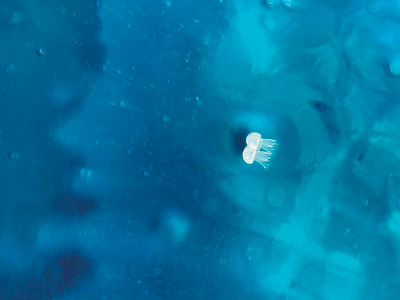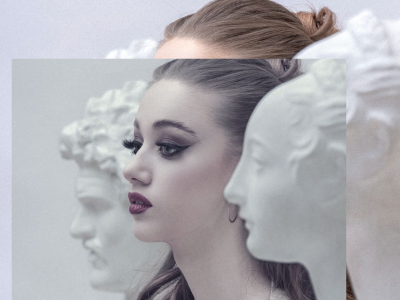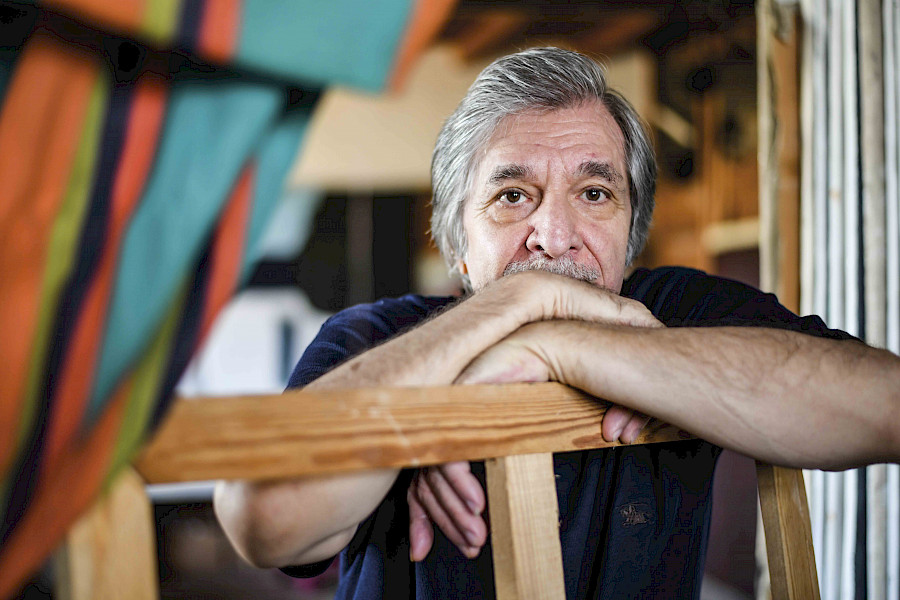
We often see a tree in his paintings. He himself is like a tree. Not only the one grown somewhere like a garden, cherished by a caring hand, – rather, that itself grew by the road or in the wasteland. Strong, high, it does not bend in the wind. Here is a fig, lonely frozen on one of the early canvases, ugly but expressive; folded branches evoke a vague alarm. Years pass, and on the artist’s canvases appear reddened mulberry, flowering cherry, snow-covered quince… This anxiety was replaced by the acceptance of nature. Years pass and the impression of nature itself – a native artist to Caspian Sea, familiar with Absheron – replaces all the markings. All that remains is a memory the changeable Caspian Sea and strict Absheron, homely figs and jubilation of spring…Here is the most polysemantic person – late Farhad Khalilov.
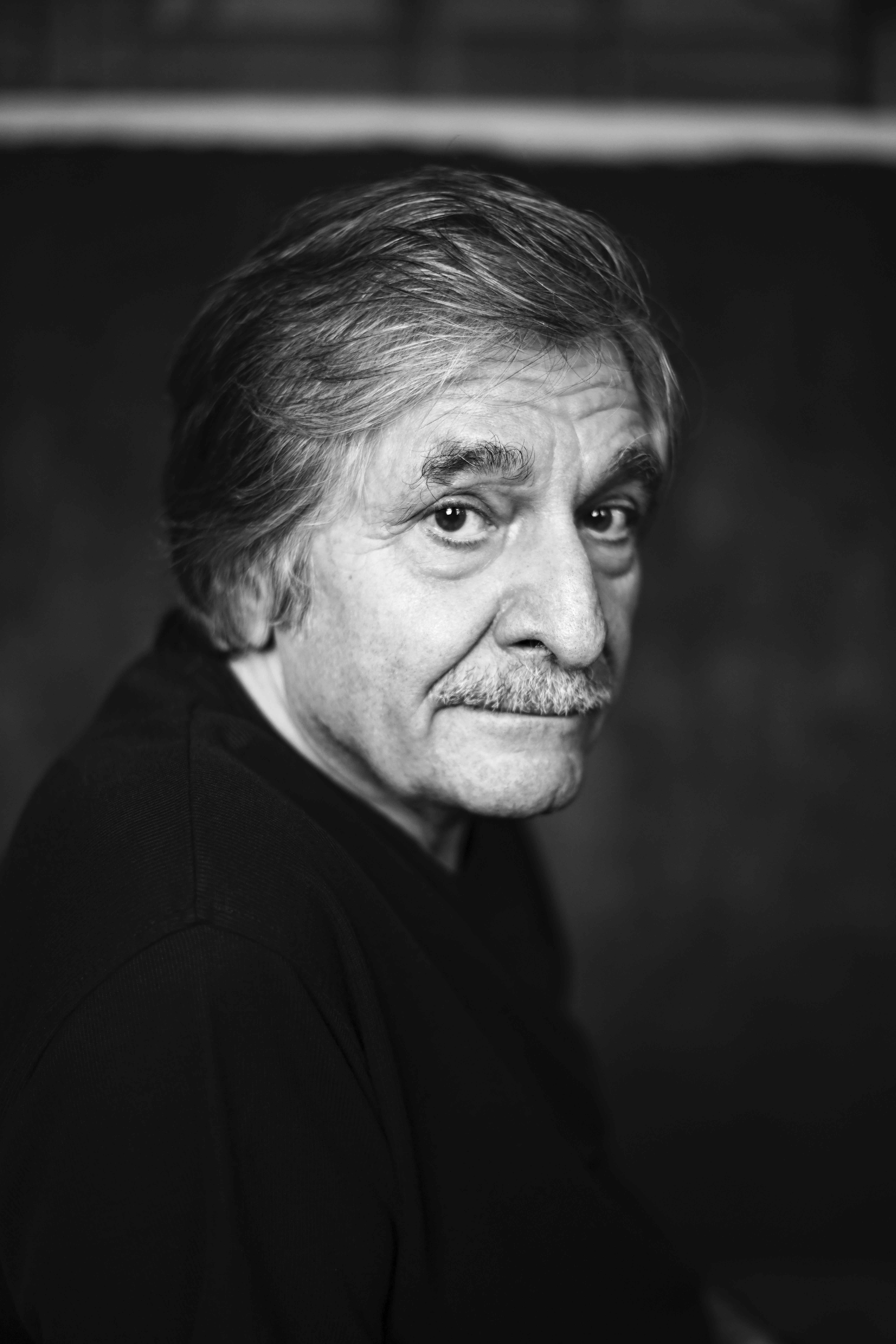
Farhad Khalilov is often called an abstractionist. But if the paintings of the main defendants in non-figurative painting of Jackson Pollock rages rhythm, and on the canvases of Mark Rothko the flower combination of the bare nerve pulsates, then in the works of Khalilov the secret life of space appears. On his canvases does not extend the sea, marked on the map of the Earth, rather that which is born inside each of us when we meet this indomitable element. Not a sea landscape unfolds before our eyes, but the path leading to it. Farhad Khalilov is a warrior. This can be seen throughout. From the way he talks, but have not disclosed – is protected by steel armor. By the fact that he suddenly hits the table – but in this blow, not anger, rather an epic power. By the way he does not try to play – a man, an artist, a person vested with power... “Old General” the sculptor Fazil Najafov once called him,but this general, wandering in the labyrinths of his own spirit, does not depict battle scenes of bloody wars, rather that which is beyond the bounds of base passions. He writes the metaphysics of search.
The selection of materials about the hero of the upcoming interview is commonplace. So it was in your case, but I did not find any books about the work of Farhad Khalilov, nor publications about his exhibitions in Baku. Then it turned out that you are exhibiting quite often outside the country, especially in Moscow...
I did not exhibit in Baku for several reasons. Firstly, because of the situation of my father. Not that it bothered me – I just realized that people are biased towards me. Some are insincere, others are servile... Once Grisha Anisimov called me, and he wrote a lot about our artists, he loved Azerbaijan very much. He looked at my work and took pictures of the paintings to the editors of the Moscow magazine "Youth". There, at one time, exhibitions of left-wing artists, mainly Moscow, of course, were held. A very serious jury sat in the journal – the editors did not just serve as a platform for demonstrating works. And then Grisha once called me and said: “The jury got acquainted with the material and approved the holding of the exhibition.” It was in 1973, and at that time it was a serious event: an exhibition in the capital, with an article in the journal "Youth", which came out in a million copies... For Baku, this was not a common thing. After a while, in 1976, there was a large solo exhibition dedicated to Spain. I arrived in Spain two years earlier. There I found a lot in common with Absheron: stone fences, olives, a vine stretched in the sand, and people are very similar to us. One could meet a completely red-haired guy, as in our mountains, and at the same time – a black one. This close range of contrasts made me think: “Why the hell did I get so far to see what I already see in my own country?!” Having returned from the trip, I began to paint pictures about Spain. Soon I received an offer from Moscow... This exhibition was also significant because it took place a year after the death of Franco – when the first Spanish diplomat appeared in the Soviet Union after a forty-year hiatus. Today's people find it difficult to understand what this is for a young artist: opening a second solo exhibition in such a short time, and not just anywhere, but in Soviet Moscow. I love Spain very much. This is connected with Lorca, and with painting... In general, all the best, in my opinion, came from there. Although the most important figure in painting for me is still Van Gogh.
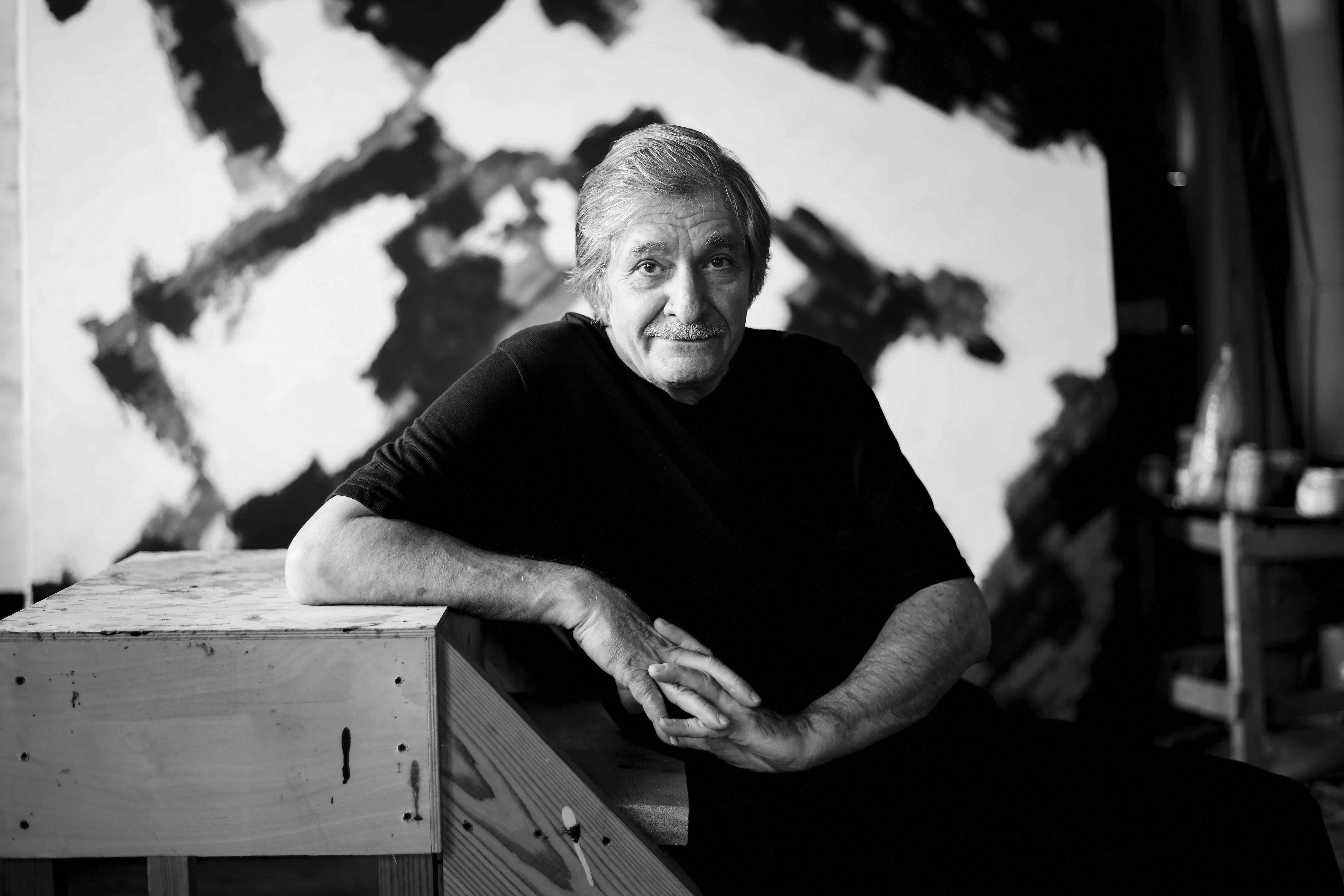
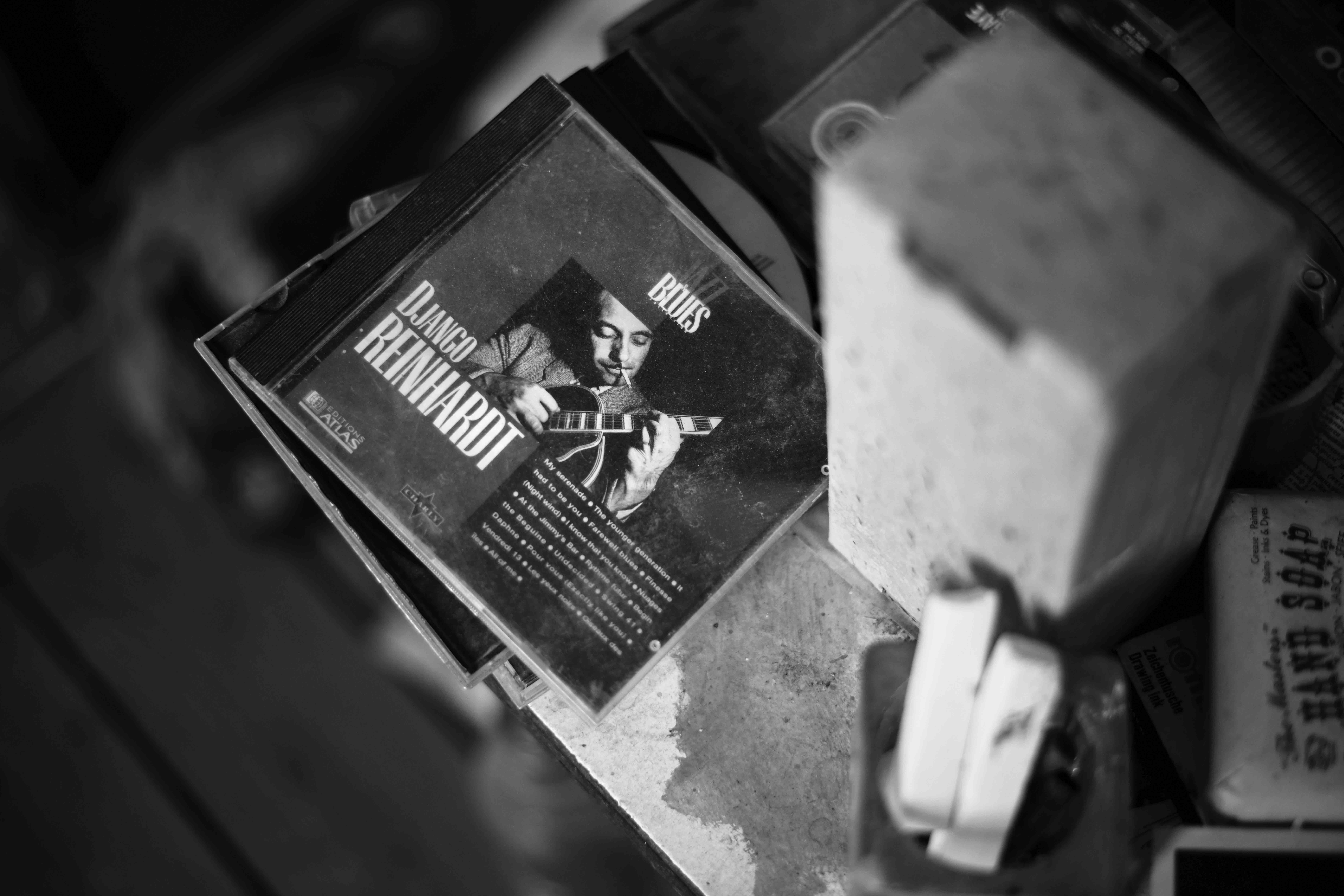
“There is a lot of unnecessary things around, which you need to be able to refuse,” you once said in an interview. Your appeal to non-objectivity is the refusal of the excess?
I would not say that I moved away from figurative painting. One critic, after my exhibition in London, wrote: "This artist found a wonderful balance between reality and abstraction." I would probably agree with that. I was never carried away by pomposity, excess... neither in creativity, nor in the surrounding reality. I liked everything medieval, primitive... And my painting, in principle, also has not changed. I just got rid of the excess and continue to get rid of. This is how I would explain the essence of my actions in art.
But this transition does not seem gradual, but rather sudden...
It all started with the picture "Mountain". I painted it in 1983. It burst out of me unexpectedly, and after it – more and more... Then I tried to return to what I had done before, but suddenly I noticed that completely unexpected work was popping up from me. So there was a cycle called "Meeting".
What was the impetus for these changes?
Probably my evolution. It doesn’t happen right away. Making the usual pictures for myself, I caught myself on the fact that a whole series of new images appeared in my head, which then appeared on the canvas. Gradually they pulled me to their side, and I went to them. I am surprised when my paintings are called abstract – for me they are absolutely realistic.
Your later work has a very strong concentration of energy. Is this the result of some conscious practice or a spontaneous manifestation of your temperament?
This is a part of me. In my youth, if I did not paint every day, I would get stressed. Today I can just look at the picture that is in the process of being created. This does not mean that I am not painting, on the contrary – maybe even more fruitful than if I had actually painted. Then, when I get down to work, the brush does its job. I myself am surprised at this... Sometimes a feeling of innocence arises – as if I haven't painted them, but someone else, despite this, there is excitement. These pictures are most dear to me. I practically live in the workshop. Never worked in a city. I migrated for a long time along Absheron, rented workshops in the villages, and after Spain chose Nardaran.
Are you attracted to the asceticism of this place?
Yes, figs, sand and people are so... complicated. In general, Nardaran is a difficult place, well, I am also a difficult person. When they say to me: “You are lucky! You sit there and just draw, ” I reply: “ But what bothers you? Go and sit you too. ”
Are your friends surprised that you can be alone for so long?
I don’t know what loneliness is. Man is lonely from the beginning, unfortunately.
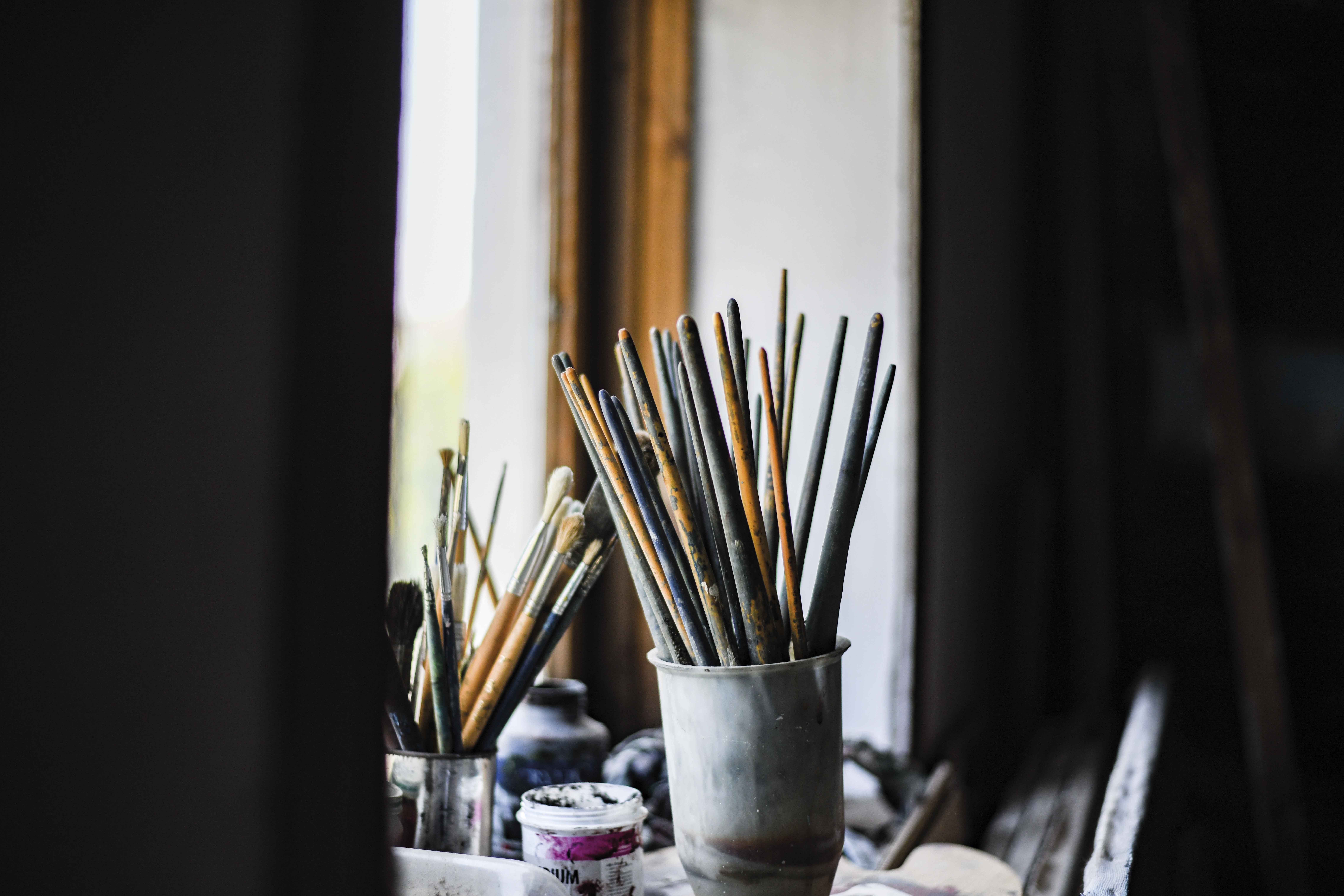
Why "unfortunately"?
But because a person tries to avoid loneliness, to deceive it, and in part this is possible thanks to friends, fans... Family and children also matter as the peak of a person’s life. From time to time I have a desire to meet my soul mates, to talk... Well, that’s all. I love communication, I love my city, but I can’t be among people for a long time. Therefore, I return to the workshop. I rarely let anyone come to me. My paintings are tormented by the presence of strangers, suffer from misunderstanding. I see this – I see how they change before our eyes, and it hurts me. To communicate with the canvas, I need complete privacy. That's why I work, moving away from the bustle of the city. My canvases are waiting for me, and I try not to part with them for long – they are very jealous.
You began to turn to a cold palette more often...
It hadn’t been particularly hot before. It has never been colorful. You know, there was a time when I decided not to draw at all. Thought: “What am I – a slave to nature?! I am going, looking, coming back, drawing...” I lived with these thoughts, I felt not free...
What would you do if you abandoned painting?
Well, that's how I am, philosophizing with myself. I thought that contemplation of beauty would lead me to a more perfect state in art.
And how long did this crisis last?
Why is the crisis? On the contrary, it seemed to me – I was close to the truth... But then I was elected chairman of the Union, and since then I began to draw even more fruitfully, using every free minute. Well, there is no coincidence in this life.
After all, it was the artists who chose you as chairman?
Yes, there was a congress, it went on for two nights, it was attended by the first secretary of the Central Committee of the Communist Party of Azerbaijan. The party group nominated another candidate, but he was not able to secure great support. Artists cast their voices in my favor. At first, there was no trust in me with artists endowed with power: I was non-partisan, without regalia, walked barefoot, rode a gaz with an open roof... My opponents, I remember, said: “If he lasts at least a year, we will change their names." But they missed one thing – my characteristic sense of responsibility. And this is the most important quality in a person.
Back to the beginning... When did you get carried away by painting?
I forgot my childhood drawings. It is like they almost never existed... I remember how I signed up for the Pioneer House, which was around the corner of our house. I did not last long there: something was not there for me... In the fourth or fifth class, a wonderful teacher appeared in our school – Yuri Yakovlevich Lobachevsky, and I, along with drawing still lives, landscapes, sketches from nature, made copies of Russian classical paintings: Vasnetsov, Polenov, Savrasov... Then I began to use oil paints for the first time, I can’t live without this smell now.
Was your family encouraged by your passion for painting?
Nobody bothered me. Only, my father, having learned that I want to go to an art school, said: "Maybe you will choose an architectural one?" Still, the profession of an artist seemed... unstable, while the architect is associated with industry, organizations, and projects. Well, in general, this is understandable, because if you choose the path of a true artist, you will have to go through many difficulties. In this sense, the Soviet system spoiled by the fact that it made it possible to do hack work: portraits of Stalin, Lenin, Brezhnev, members of the Politburo... The artists made good money on this. But by and large, doing art is a luxury. You need to be able to afford it.
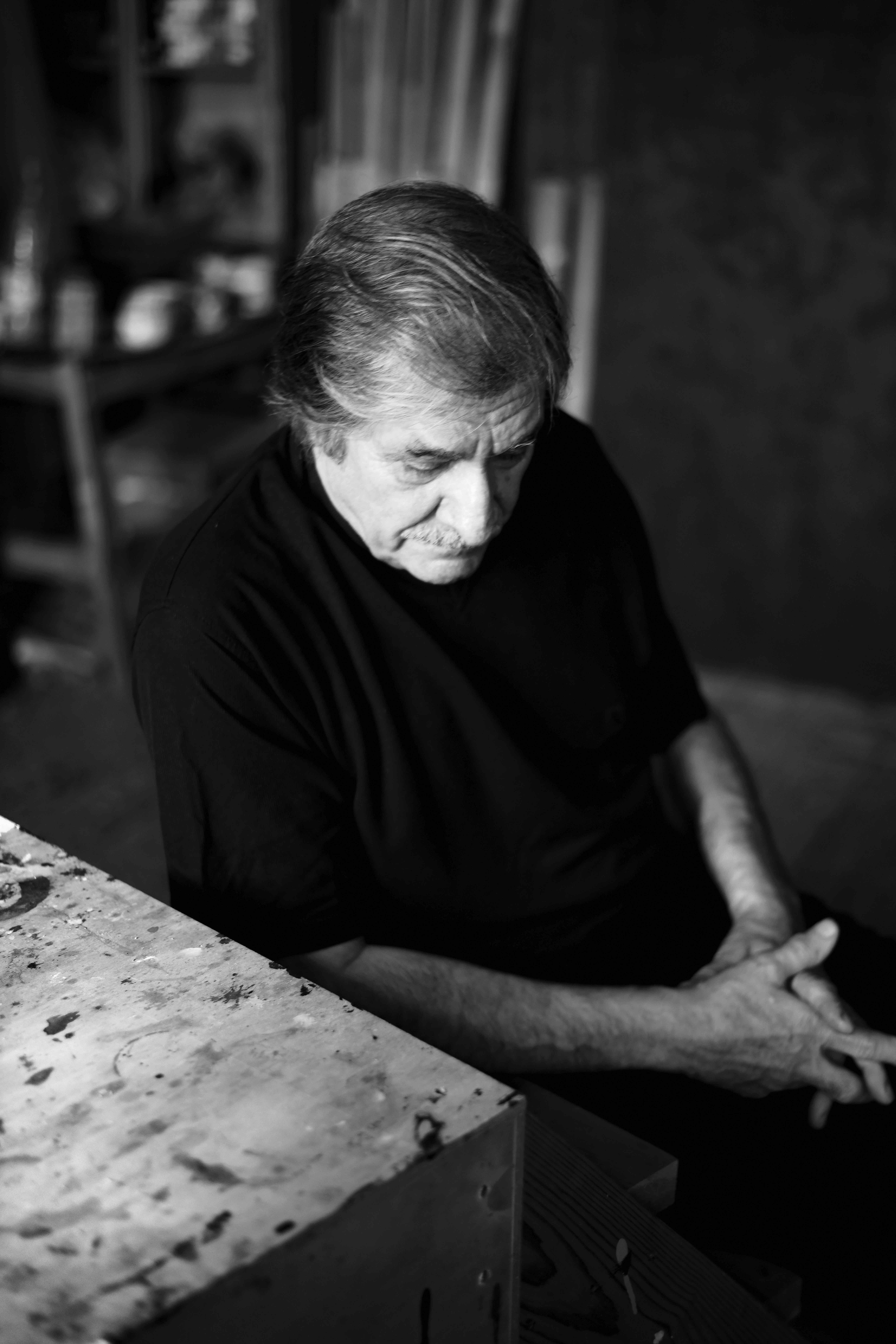
In preparation for our conversation, I re-read the diaries of Grigory Kozintsev. Something in his notes seemed to me in tune with your biography. I read to you an excerpt: "When, as a boy, I decided to become a director, my father, the old doctor, was terribly upset. 'The matter of this job is,' he told me, 'to entertain people, to fool around so that the public has fun.' The point is to give bread, build a house, cure.' Often it seems to me that my father was right. To convince him all the same, I took on Shakespeare". Is your decision connected with becoming a chairman of the Union of Artists with a desire to establish itself in the eyes of your father, to prove to him objectivity, as Dovlatov wrote, your profession?
It all came together: my thoughts about slavery, which I already spoke about, the loss of the sound of a surname – my father was already retired by then... And most importantly, people's faith. It is very important for me! Usually, children of high-ranking officials do not go, they are not elected anywhere. And I'm proud of it. I am proud that people followed me, at that moment when they could trample me. So, I lived right and in their eyes was a salvation. The next morning after the vote, which lasted all night, I came to my father and saw how moved he was, and even wept. Everything is interconnected. There is nothing accidental in life. At the beginning of my chairmanship, I organized an exhibition “In Memory of Artists” in Moscow. The time was very difficult – the beginning of the 90s. There were works by Javad Mirjavadov, Sattar Bahlulzade, Gorkhmaz Efendiyev, Alekper Rzakuliev... The Russians were stupefied from this exhibition, they said: “We forgot the living, but he remembered the dead!” It was a brilliant exhibition, where each author had his own room. The so-called Absheron period in general – take off! Both informal and recognized artists.
Who do you mean by recognized artists?
Mikail Abdullaev, Tahir Salakhov, Togrula Narimanbekova... All powerful guys! It was just that the artists were “edible” and “inedible” for the authorities.
I wonder how this status of “recognition” is developed. After all, Togrul Narimanbekov cannot be called a socialist realist, nevertheless, he was popular during his lifetime...
And it is very simple: they are lucky! Petr Matveevich Elistratov appeared, the second secretary of the Central Committee of the Communist Party of Azerbaijan, a great lover of painting. Once he comes to the exhibition and sees Togrul’s picture rejected. And so he says to the top leadership of the country: “The work of this artist must be hanged and a prize awarded to him!” You see, what a happy coincidence? The road for Narimanbekov has opened! He also helped Salakhov, always stood up for Sattar... All this was a great incentive for work.
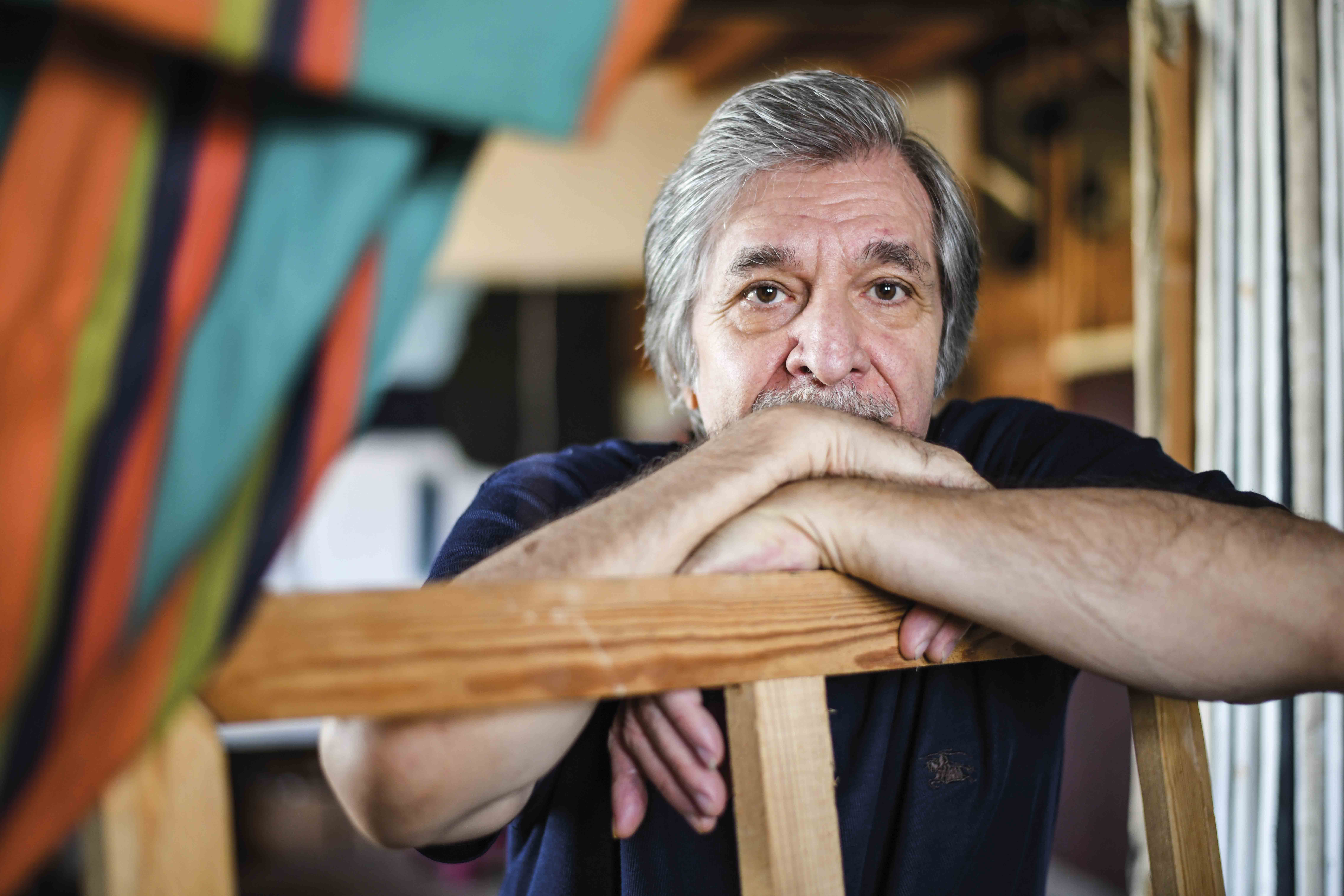
Does criticism not upset you?
My friend, artist Sanan Kurbanov once said: “Only with you can I communicate freely. All other artists are offended if, along with praise, I make criticisms." But you can't please everyone. Those who are sensitive to criticism are simply too confident in themselves and do not feel any doubt. I never sit at my exhibitions, but once in Moscow, the day before closing, I nevertheless came and found such a scene: I see some hard worker, in some kind of sandals – and it was in the winter! – and here he was clutching a limp, intelligent-looking person. Between them a brawl! A man in sandals covers a lame man with obscenities, and that intellectual pushes this beast out of the hall with the words: “Yes, this is not your place! You have no place here! ” For me, this was the most sincere discussion of my exhibition.
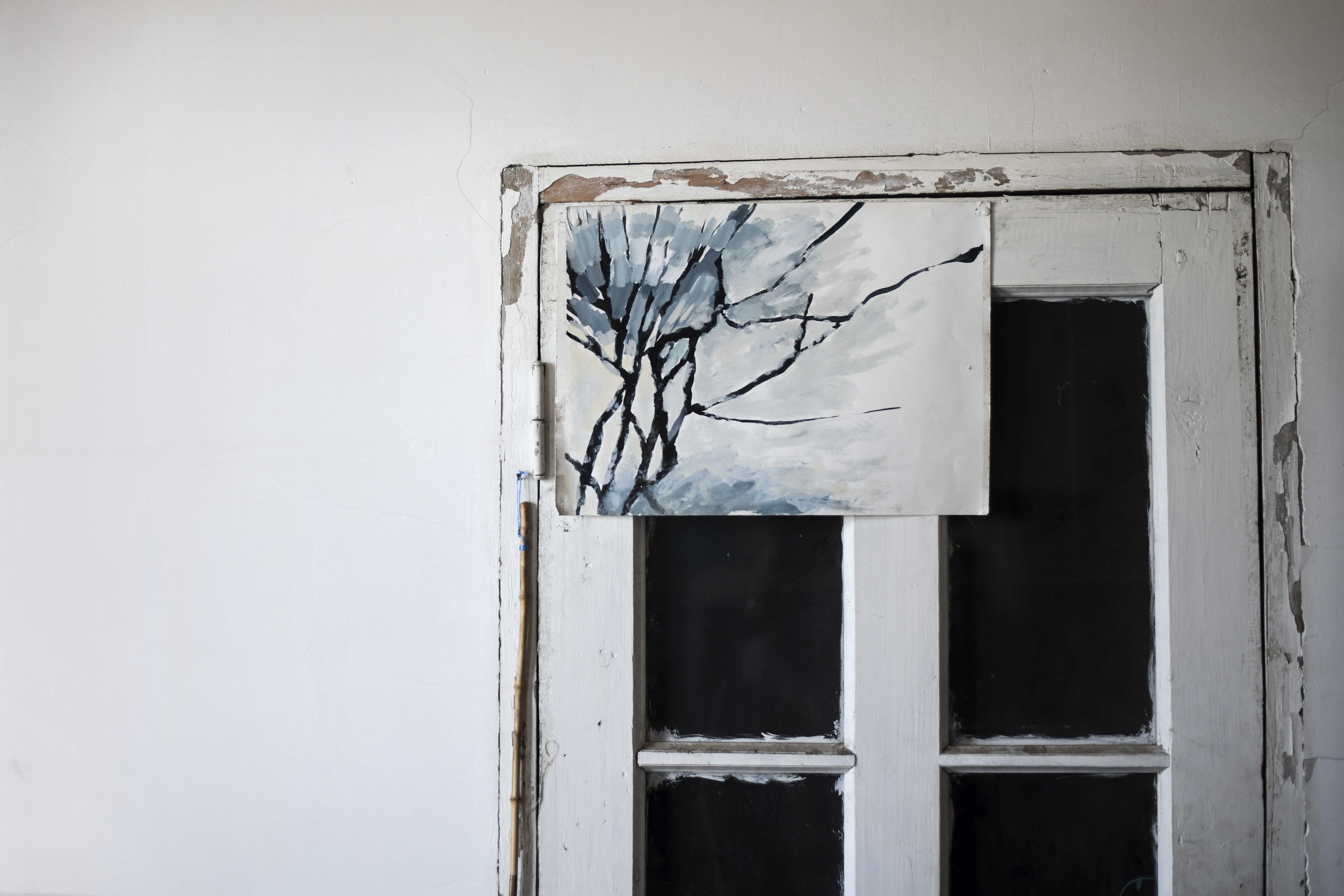
“We must be able to forget ourselves,” you once answered the question about effective management. Does the ability to forget oneself not contradict the nature of the artist? Artist because fixate on himself...
Yes, the artist is an egocentric, sees only around himself, and all his grievances, hardships and complaints are caused by this. For example, they tell me about some of their problems, but I can’t hear if I don’t give up my own vision of art. When I look at someone else’s canvas, I have to forget myself. Basically, 99.9% of artists look through the prism of their work, and this is a completely wrong path. And even the great Cezanne, calling Van Gogh's work a painting of a madman, I think, proceeded from his experience and did not empathized with the work of the great artist. But if I let everything through me, can I appreciate the paintings of Gorkhmaz, an outstanding artist? Cezanne didn't give a damn, but I have no right, I work with people.
Among your works there are portraits and still lives, but mostly landscapes. Why is there such a craving for the image of nature?
Actually, I don’t really like it when they say "landscape", you know? For me, it is rather a phenomenon of nature. I care about her condition, not what I see in front of me. Nature has always attracted me. As a child, I remember sitting in the country and watching – I watched the movement of the wind, sunset, grass...
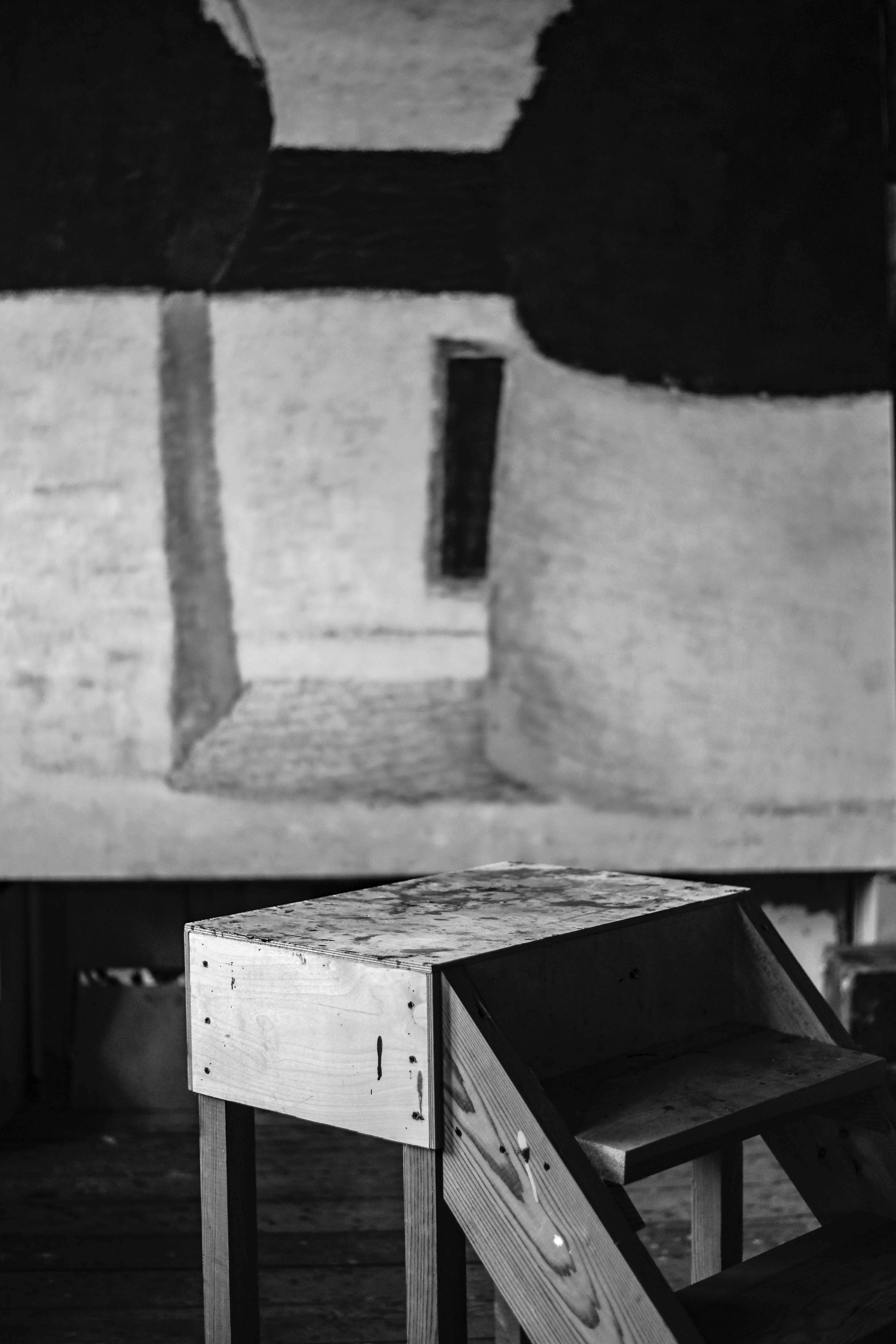
And why exactly the Absheron landscape? Why not the forests of Lankaran or the mountains of Shahdag, for example?
I grew up on Absheron, I got everything here. Architecture, settlements, aesthetics in general... Not that it attracted me – I am a part of it. But in my works I see all of Azerbaijan.
Interview: Nonna Muzaffarova
Photo: Maya Baghirova

